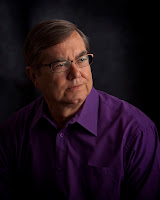When a serial killer has been at large in a community for an extended period of time, the public loses faith in local law enforcement and begins to look for its deliverance from other quarters.
The first manifestations of this are usually prayer vigils and crusades calling on divine intervention. If the killer continues to slaughter victims and eludes police long enough, calls for supernatural assistance inevitably arise.
The Jack the Ripper case is the most famous serial killer case in history, but by no means the first or the worst. In the Whitechapel area of London's East End, five women were butchered and left in streets and alleyways, and one was viciously mutilated in her bed. Then, the Ripper vanished into history.
Noted British spiritualist, medium, preacher, and Fleet Street journalist, Robert James Lees believed he saw visions of Jack the Ripper and went to police with that information. Scotland Yard turned him away thinking he was on a lunatic fringe. For a short while, Lees was himself a suspect in the Ripper case.
Sooner or later, psychics turn up in virtually every serial killer case. The first person to bill himself as a "police psychic" was Dutchman Pieter van der Hurk, known in America as Peter Hurkos.
When the Stone of Scone was stolen from Westminster Abbey in 1950, legend has it that Hurkos told police that the Scottish relic was stolen as a prank but would soon be found. Just over a week's time later, the Stone was recovered. The French press had a field day with the story.
Hurkos received international press coverage, which made him an instant celebrity in Europe. By the end of the decade, he migrated to the United States and developed a supper club act based on his notoriety in solving crimes for police around Europe. Most of his claims were anecdotal and lacked official documentation.
In 1961, Peter Hurkos, with the help of V. John Burggraf, wrote his autobiography simply titled Psychic. He tells of the origin of his gift of "second sight," a fall from a four story building, and he proceeds to give numerous examples of his more notable cases with "extrasensory perception" (ESP).
Hurkos tells his readers early in his story that his strange gift has baffled and astounded scientists and researchers throughout the world. "I am what parapsychologists refer to as a psychic. I am sensitive to people and events that concern them," he purports. Without giving any names or sources, Hurkos claims, "I have been told by scientists that my psychic gift is, so far as they know, the most highly developed in the world."
"I can read vibrations through a phenomenon known as psychometry. Another way to look at it is divining facts through physical contact with an object or its owner. Psychometry is only one of the many facets of my gift of ESP, the famous 'Sixth Sense' of history and legend. I also have the gift of 'precognition'."
Peter Hurkos cites in his book others from history who have had "inner vision." He mentions the prophet Isaiah of The Bible, the prophecies of Nostradamus four hundred years ago, and Edgar Lee Cayce, a famous twentieth-century sensitive. He criticizes Nostradamus for "vague predictions."
"I have never claimed more than eighty-five and one-half percent accuracy in my readings, as established by scientists performing thousands and thousands of tests with me."
Peter Hurkos equates that "emanations from a person or an object do exist, just as heat waves, radio waves, and electric impulses exist." He claims to be sensitive to vibrations from:
Peter Hurkos gained national attention in America when he was the subject of a One Step Beyond episode, a television supernatural series in the early Sixties.
In 1963, he interjected himself in the Boston Strangler investigation, much to the displeasure of the Boston Police Department. After being arrested for impersonating a police detective and harassing a potential witness, he left the city under duress. Charges would be made and a trial would be held if he didn't leave town immediately.
Nonetheless, Hurkos was portrayed by an actor in the Hollywood film, The Boston Strangler, which did much to rehabilitate his popular reputation.
He became a regular guest on the television talk show circuit, gave private readings to celebrities and the wealthy, and he continued to perform his Las Vegas and Hollywood nightclub act with his wife/assistant, Stephany, but his bookings waned.
In 1969, Hurkos received an unexpected offer from a citizens' group to come to Ann Arbor, Michigan, and help police solve another serial killer case. Six local young women had been sexually assaulted and killed within a two year period, and the police were baffled.
Reluctantly, he agreed. He was hoping he could regain some lost credibility and jump-start his career, if he could only solve these brutal sex-slayings before the killer would strike again.
The first manifestations of this are usually prayer vigils and crusades calling on divine intervention. If the killer continues to slaughter victims and eludes police long enough, calls for supernatural assistance inevitably arise.
The Jack the Ripper case is the most famous serial killer case in history, but by no means the first or the worst. In the Whitechapel area of London's East End, five women were butchered and left in streets and alleyways, and one was viciously mutilated in her bed. Then, the Ripper vanished into history.
Noted British spiritualist, medium, preacher, and Fleet Street journalist, Robert James Lees believed he saw visions of Jack the Ripper and went to police with that information. Scotland Yard turned him away thinking he was on a lunatic fringe. For a short while, Lees was himself a suspect in the Ripper case.
Sooner or later, psychics turn up in virtually every serial killer case. The first person to bill himself as a "police psychic" was Dutchman Pieter van der Hurk, known in America as Peter Hurkos.
When the Stone of Scone was stolen from Westminster Abbey in 1950, legend has it that Hurkos told police that the Scottish relic was stolen as a prank but would soon be found. Just over a week's time later, the Stone was recovered. The French press had a field day with the story.
Hurkos received international press coverage, which made him an instant celebrity in Europe. By the end of the decade, he migrated to the United States and developed a supper club act based on his notoriety in solving crimes for police around Europe. Most of his claims were anecdotal and lacked official documentation.
In 1961, Peter Hurkos, with the help of V. John Burggraf, wrote his autobiography simply titled Psychic. He tells of the origin of his gift of "second sight," a fall from a four story building, and he proceeds to give numerous examples of his more notable cases with "extrasensory perception" (ESP).
Hurkos tells his readers early in his story that his strange gift has baffled and astounded scientists and researchers throughout the world. "I am what parapsychologists refer to as a psychic. I am sensitive to people and events that concern them," he purports. Without giving any names or sources, Hurkos claims, "I have been told by scientists that my psychic gift is, so far as they know, the most highly developed in the world."
"I can read vibrations through a phenomenon known as psychometry. Another way to look at it is divining facts through physical contact with an object or its owner. Psychometry is only one of the many facets of my gift of ESP, the famous 'Sixth Sense' of history and legend. I also have the gift of 'precognition'."
Peter Hurkos cites in his book others from history who have had "inner vision." He mentions the prophet Isaiah of The Bible, the prophecies of Nostradamus four hundred years ago, and Edgar Lee Cayce, a famous twentieth-century sensitive. He criticizes Nostradamus for "vague predictions."
"I have never claimed more than eighty-five and one-half percent accuracy in my readings, as established by scientists performing thousands and thousands of tests with me."
Peter Hurkos equates that "emanations from a person or an object do exist, just as heat waves, radio waves, and electric impulses exist." He claims to be sensitive to vibrations from:
- an object a person has touched
- a piece of clothing the person has worn
- a bed a person has slept in
- anything a person is associated with
- even a photograph of the person
Peter Hurkos gained national attention in America when he was the subject of a One Step Beyond episode, a television supernatural series in the early Sixties.
 |
| Peter Hurkos in custody |
Nonetheless, Hurkos was portrayed by an actor in the Hollywood film, The Boston Strangler, which did much to rehabilitate his popular reputation.
 |
| Peter Hurkos, wife Stephany, with actress Kathryn Grayson |
In 1969, Hurkos received an unexpected offer from a citizens' group to come to Ann Arbor, Michigan, and help police solve another serial killer case. Six local young women had been sexually assaulted and killed within a two year period, and the police were baffled.
Reluctantly, he agreed. He was hoping he could regain some lost credibility and jump-start his career, if he could only solve these brutal sex-slayings before the killer would strike again.






















